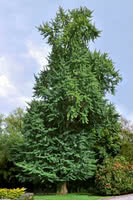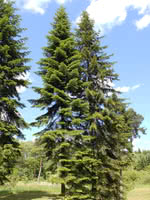Mon-Fri 9am - 5pm Mountain time
Ginkgo Biloba vs Siberian Fir
Ginkgo biloba
Abies sibirica
NOT AVAILABLE THIS SEASON - MIGHT RETURN
NOT AVAILABLE THIS SEASON - MIGHT RETURN
(new stock expected: fall of 2027)
The Ginkgo Biloba is regarded as one of the most distinctive and beautiful of all the deciduous trees, and has remained genetically unchanged for millions of years. Its beautifully fan-shaped leaves develop a clear yellow colour in fall. Graceful and attractive year-round, Ginkgo is the perfect conversation starter in your yard.
Siberian Fir is an evergreen tree best known for its strong aroma. This tree's needles are popular for essential oils and aromatherapy. It also grows softwood that is used for furniture and wood pulp. This species is very cold hardy and shade tolerant.
This species is bright green and conical shaped. Most interesting is its upright blue cones that fade into brown as they mature.
Ginkgo Biloba Quick Facts
Siberian Fir Quick Facts
Toxicity: Uncooked nuts in large quantities

